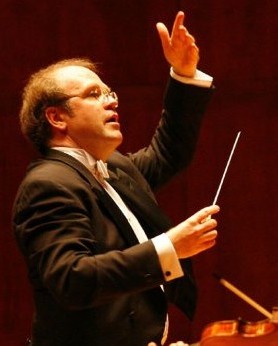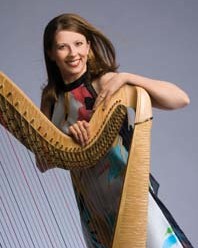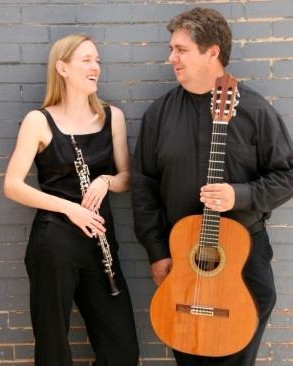On tonight's show:
Colorado Symphony Orchestra
From this season's Masterworks Series, guest conductor Bernard Labadie and the Colorado Symphony play Mozart.
Wolfgang Mozart:
La Clemenza di Tito Overture, K. 621
Symphony No. 40 in G minor, K. 550
Bernard Labadie, conductor
recorded 1/23/10
Earth Day
Harpist Yolanda Kondonassis is donating a portion of the royalties from her most recent CD, Air, to the Environmental Defense Fund.
Claude Debussy: "Final" (3rd movement) from Sonata for Flute, Harp and Viola
Yolanda Kondonassis, harp
Joshua Smith, flute
Cynthia Phelps, viola
Telarc 80694
Rocky mountain Center for the Musical Arts
Charley looks to Sunday's Rocky Mountain Center for the Musical Arts faculty recital. Two of the musicians involved stopped by our Performance Studio.
Marcia Marchesi: Ciranda
I. Ciranda
II. Contando Estrelas
III. Esconde-esconde
James Cline, guitar
Tenly Williams, oboe
KVOD Performance Studio: recorded 10/17/08
Produced by Martin Skavish
Program Notes
Wolfgang Amadeus Mozart (1756-1791): Overture to La Clemenza di Tito, K.621
During the summer of 1791, even as he worked furiously on The Magic Flute and the Requiem, Mozart received a new commission. Domenico Guardasoni, acting on instructions from a band of Bohemian noblemen, asked Mozart to write a serious opera for the celebration of Leopold II's coronation as King of Bohemia. The fee was twice the normal rate; Mozart was in no position to refuse.
The libretto for La Clemenza di Tito, by Metastasio as revised by Caterino Mazzola, concerns love and intrigue in Rome around 80 A.D. Mozart wrote the opera in 18 days, partly in Vienna that summer, partly in carriages and inns on the way to Prague and partly in Prague, just before the first performance on September 6, 1791.
In his book on Mozart's operas, Charles Osborne writes: "Composed at the last moment, the Overture nevertheless does not make use of any themes from the opera: instead it establishes a mood which, though formal, is also festive. Its contrapuntal development section links it in mood with The Magic Flute Overture which must have been composed only a week or two later."
The Overture is scored for pairs of flutes, oboes, clarinets, bassoons, horns and trumpets, as well as timpani and strings.
Wolfgang Amadeus Mozart (1756-1791): Symphony No. 40 in G minor, K.550
I. Molto allegro
II. Andante
III. Minuet: Allegretto
IV. Allegro assai
We have only speculation about why Mozart wrote these works and whether any of them were performed during Mozart's lifetime. They may have appeared on programs in Leipzig in May, 1789, or at a pair of concerts at the court theatre in Vienna conducted by Antonio Salieri in April, 1791. On the latter occasion, the brothers Anton and Johann Stadler played solo clarinets, a fact which leads some to infer that the G minor Symphony was the "Grand Symphony" on the program, since Mozart did revise the score to include two clarinets.
A great deal has been written about the G minor Symphony, much of it nonsense, some of it useful. A French critic in 1828 called it "one of the very finest productions of the human mind." About twenty years later, a Russian commentator wrote: "I doubt if there exists in all music anything more deeply incisive, more cruelly anguished, more violently distracted, more agonizingly passionate than the second half of the finale."
Most of the Romantics seem to miss the point. Berlioz called the work "that model of delicacy and naïveté." Schumann found in it "Grecian lightness and grace."
In his book The Classical Style, Charles Rosen wrote in 1972: "The limit of dramatic complexity in a classical finale is reached with Mozart's G minor symphony: despairing and impassioned, it is also rhythmically one of the simplest and squarest pieces that Mozart ever wrote."
The original version of the work was scored for flute, 2 oboes, 2 bassoons, 2 horns and strings. The second version adds 2 clarinets.
© 2010 Charley Samson
